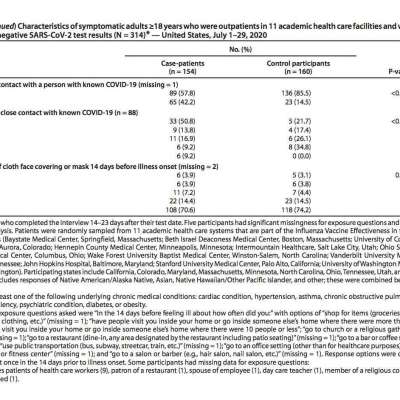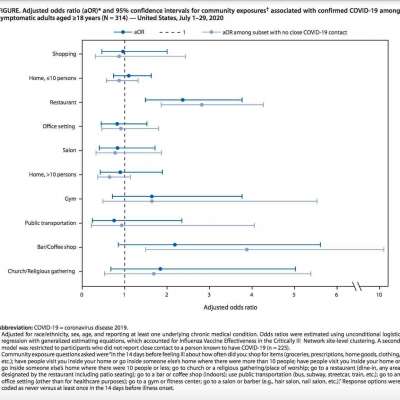I have known Jim at a professional level for over ten years, his credentials are not overstated. EDIT TO THIS POST: THIS POST WAS NOT FACT CHECKED. Facebook appended a fact check about a story published elsewhere that said things I did not say. I am a scientist and inventor on over 250 biomedical products. I have a Ph.D. in biochemistry and have been doing biomedical research for over 3 decades. I have read only the paper attached here and no other information about it. I reviewed the paper myself, as I would when I do a peer-review for a scientific journal, and came to my own conclusion, which is that the paper clearly shows NO CORRELATION BETWEEN MASK-WEARING AND disease incidence in the "case" group. I DID NOT SAY THAT MASKS ARE INEFFECTIVE, WHICH IS WHAT THE FACT CHECKERS SAY. I said there was no correlation in this particular paper. EDIT ENDS.
CDC STUDY SHOWS NO CORRELATION BETWEEN MASK WEARING AND GETTING COVID. Notes from a biomedical scientist, Jim Brauker, Ph.D.
This CDC study looked at patients with and without confirmed COVID-19. It found a strong correlation between getting the disease and having been exposed to someone with the disease (P-value <0.01) and a high correlation between having exposure to a family member with the disease (P-value <0.01).
The study found NO CORRELATION WITH MASK WEARING (P-value = 0.86). Patients who did not have COVID were just as likely to wear masks as those that didn't.
The authors do not even discuss the lack of correlation related to mask-wearing. It is as if they cannot even see their own results. Remarkably, they do not mention this lack of correlation in their DISCUSSION section and go on to repeatedly say patients should use masks to mitigate the disease.
This suggests an inherent bias among the researchers to come to certain conclusions. I have seen these kinds of blind spots commonly in the past, and as a peer-reviewer for scientific journals often required that they remedy their lack of attention to alternate explanations. It is very common for researchers to not see beyond their own bias.
Now here is another finding from the study. PATIENTS WHO RECENTLY ATE IN A RESTAURANT WERE TWICE AS LIKELY TO GET THE DISEASE AS THOSE WHO DID NOT! BUT IF THEY SHOPPED FOR THEIR GROCERIES IN A STORE THERE WAS NO CORRELATION!
Again, the authors did not hone in on all the possibilities to explain this. Instead, they went straight to their bias and proposed the likely explanation that people have to remove their masks to eat food in a restaurant, which raises transmission risk, completely ignoring the fact that there was no correlation with mask-wearing in the other portion of their study!
Nor did they address the obvious question. What is the difference between getting your food in a market and getting it in a restaurant? One possibility is that someone in the restaurant is directly handling your food, your dishes, your silverware, and your drinks leading to the possibility that it might have to do with contact-mediated transmission (through touching of objects and food).
Nor did they suggest the obvious possibility that mask-wearing staff, who are constantly touching the warm, moist surface of the mask they have been wearing all day between servings of drinks and food might facilitate this contact-mediated transmission.
If you want to understand what is going on, you MUST GO TO THE SCIENTIFIC LITERATURE AND LOOK AT THE RESULTS YOURSELF. The scientists have their own biases. This is commonly seen in science and it always works itself out (if the area of study is important), but we are at too early a stage to get unbiased information. What you are going to get is the groupthink mantra.
The take-home message from this study is as follows.
1. Patients who came into contact with a COVID positive person, especially if it was a family member, were more likely to get it, and mask-wearing did not mitigate transmission.
2. Patients who eat in restaurants were more likely to get COVID than patients who didn’t, and their frequency of mask use was not a factor in preventing it. Jim Brauker https://www.cdc.gov/mmwr/volum....es/69/wr/pdfs/mm6936

